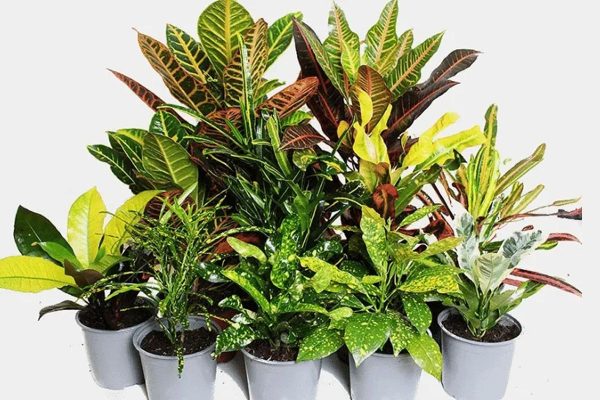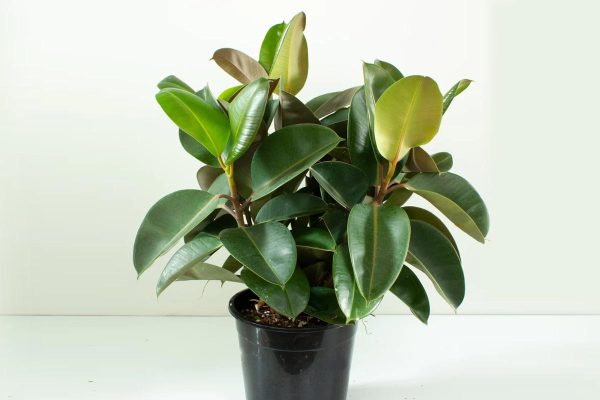Plants
Poinsettia
Introduction / परिचय
The Poinsettia (Euphorbia pulcherrima) is an iconic plant synonymous with festive celebrations. Native to Mexico, this perennial shrub dazzles with its vibrant red, pink, or white bracts, often mistaken for petals. Though traditionally associated with Christmas, Poinsettias are versatile, serving as ornamental houseplants or outdoor landscape additions. Recognized for their striking foliage, these plants require careful attention to thrive. With proper care, they can offer beauty well beyond the holiday season. Explore the rich history, diverse varieties, and cultivation tips to unlock the secrets of this enduring symbol of joy and warmth in the botanical world.
| English Name: | Poinsettia |
| Hindi Name: | पॉइन्सेटिया (Poinsettia) |
| Scientific Name: | Euphorbia pulcherrima |
| Family: | Euphorbiaceae |
| Kingdom: | Plantae |
| Light : | Bright, Indirect Light |
| Height: | 2-13 feet tall |
| Flower Color : | Red, pink, white. |
| Leaves Color : | Dark Green |
| Eason Features : |
Also Read This :Green Guardians: Exploring the Best Plants Used for Hedges
When to Plant Poinsettia
Poinsettias are typically planted outdoors in regions with a mild climate, preferably in spring after the danger of frost has passed. In colder climates, they are often grown as indoor houseplants. For indoor cultivation, purchase potted poinsettias in late fall or early winter to enjoy their vibrant colours during the holiday season. When transitioning outdoors, choose a location with well-drained soil and partial to full sunlight. Planting should occur after the last frost, maintaining a spacing of around 18 inches. Ensure the soil is enriched with organic matter, and consider using mulch to retain moisture. Regular monitoring and care will foster healthy growth and vibrant bracts.
Flowering time of Poinsettia
Poinsettias are short-day plants, meaning they require long nights to trigger flowering. In their native habitat, the shorter days of late fall and early winter induce the colourful bracts associated with the holiday season. For indoor poinsettias, simulating these conditions is crucial. To initiate blooming, provide 14 hours of darkness each night for about 6-8 weeks, starting in late September or early October. After this period, place the plant in bright, indirect light during the day. This careful light manipulation prompts the Poinsettia to produce its iconic bracts and flowers, enhancing their aesthetic appeal and maintaining their seasonal charm.
Also Read This :How to Growing Krishna Kamal, Lord Krishna’s Favorite Flower, at Home
Varieties / किस्मे
Numerous varieties and cultivars of Poinsettias (Euphorbia pulcherrima) are available, offering various colours, sizes, and forms. Some popular Poinsettia varieties include:
Classic Red
The traditional and most recognizable variety featuring vibrant red bracts.
White
These Poinsettias have white bracts and are elegant and often associated with winter landscapes.
Pink
Softer in hue than red, pink Poinsettias provide a lovely alternative for holiday decor.
Marble
These varieties may exhibit marbled or speckled patterns on their bracts, adding a unique touch.
Jingle Bells
Characterized by bracts with a pinkish hue and distinctively ruffled edges.
Winter Rose
Known for its compact growth and rose-like bracts, resembling a flowering rose.
Ice Punch
A bi-colour variety with creamy white and red bracts creates striking visual contrast.
Cinnamon Star
Features bracts with red and pink tones, creating a warm and festive appearance.
Gold Rush
Uniquely coloured with bracts in shades of yellow and gold, adding a touch of warmth.
Autumn Leaves
Exhibits bracts in shades of orange and red, reminiscent of fall foliage.
When selecting a Poinsettia, consider the variety that best suits your aesthetic preferences and the overall theme of your holiday or seasonal decor. Each variety brings its charm to this classic holiday plant.
Also Read This :Embracing the Beauty of Indoor Plants with Striking Red Leaves
Classification of Plants/ पौधों का वर्गीकरण
Poinsettias (Euphorbia pulcherrima) belong to the Euphorbiaceae family and are classified within the Euphorbia genus. They are characterized as deciduous shrubs, and their showy bracts, often mistaken for flowers, contribute to their ornamental appeal. Poinsettias are native to Mexico and Central America, thriving in tropical and subtropical climates. While the classic red variety is widely recognized, numerous cultivars showcase color, size, and form variations. These variations are achieved through selective breeding and hybridization. Poinsettias are further categorized based on their bract colours, patterns, and growth habits, offering a diverse array of options for both indoor and outdoor cultivation.
Also Read This :Growing Syngonium Plants at Home: A Simple Guide Using Cuttings and Seeds
History / इतिहास
The history of Poinsettias dates back to ancient Aztec culture in Mexico, where the plant, known as "Cuetlaxochitl," was highly revered for its brilliant red bracts. Joel Poinsett, the first U.S. Ambassador to Mexico, discovered the plant in the early 19th century and introduced it to the United States. In his honour, the plant was named Poinsettia. Its popularity grew, and by the 20th century, it became a symbol of the holiday season. Today, Poinsettias are a global icon of festive celebrations, with a rich cultural history and a significant presence in Christmas traditions worldwide.
Also Read This :Right Direction to Keep Tulsi Plant in Your Home
Uses and Benefits / उपयोग एवं फायदे
Poinsettia plants serve both aesthetic and cultural purposes. Primarily recognized for their vibrant bracts, they are widely used as festive decorations during the holiday season. Beyond their ornamental value, Poinsettias contribute to indoor air quality by removing pollutants. In traditional medicine, some cultures use them for skin ailments. Additionally, Poinsettias are integral to holiday traditions, symbolizing joy and celebration. As part of landscaping, certain varieties thrive outdoors, enhancing gardens with their vibrant hues. While non-toxic, they should be handled with care. Poinsettias blend beauty, cultural significance, and potential health benefits, making them cherished and versatile plants.
Also Read This :Curry Leaves – Health Benefits and how to use them
How to Grow Plant / कैसे उगाएं
Growing Poinsettia plants requires attention to specific care requirements to ensure they thrive. Here's an essential guide on how to grow a Poinsettia plant:
Purchase a Healthy Plant
- Choose a healthy Poinsettia with dark green leaves and brightly coloured bracts.
- Check for signs of pests or diseases.
Light
- Place the Poinsettia in a location with bright, indirect light.
- Avoid direct sunlight, as it may fade the bract colour.
Temperature
Maintain a temperature between 65-75°F (18-24°C) during the day and avoid drafts.
Watering
- Water when the soil feels dry, but avoid letting the plant sit in standing water.
- Ensure proper drainage to prevent root rot.
Humidity
Poinsettias prefer high humidity. Place a tray with water near the plant or use a humidifier.
Fertilization
Feed with a balanced, all-purpose fertilizer every 2-4 weeks during the growing season.
Pruning
- Pinch back new growth in late spring or early summer to encourage bushiness.
- Remove faded or yellow leaves.
Flowering (For Reblooming)
To promote flowering, provide 14 hours of darkness nightly for 6-8 weeks, starting in late September.
Transitioning Indoors
If grown outdoors, bring the plant indoors before the first frost.
Careful Handling
Poinsettias have a milky sap that may cause skin irritation, so handle them carefully.
Following these guidelines, you can enjoy a healthy and vibrant Poinsettia plant throughout the holiday season.
Also Read This :Blooming Brilliance : 5 Ingenious Ways to Use Banana Peels in Your Garden
How to Take Care/ देखभाल कैसे करे
Also Read This :Tips For Curry Plant Growth: Secrets to Rapid Curry Plant Growth
Interesting Facts / रोचक तथ्य
Ancient Roots: Poinsettias, native to Mexico, were used by the Aztecs for dye and medicine.
Joel Poinsett: The plant is named after Joel Poinsett, the first U.S. Ambassador to Mexico, who introduced it to the United States in the 1820s.
Floral Bracts: Poinsettia flowers are small and yellow, while the iconic red, white, or pink parts are actually colored leaves called bracts.
December 12 Celebration: In the U.S., December 12 is National Poinsettia Day, honoring Joel Poinsett's death anniversary.
Global Symbol: Poinsettias are used in Christmas traditions worldwide, symbolizing purity, good cheer, and celebration.
Air Purification: Poinsettias contribute to indoor air quality by removing pollutants.
Also Read This :Lots of Roses will Bloom. Use these in the Roots



